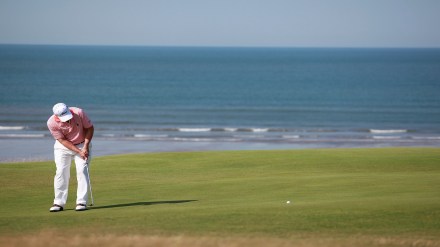If every golf course in the world was a links course — as must have been the case till golf was confined to the British Isles — then we wouldn’t have had so much discussion about ‘protecting,’ the game from technology-enabled advances. Notably, the gobsmacking distance some modern pros can hit the golf ball. All the talk we’ve had over the last week about the PGA Tour’s surprise decision to oppose the rollback in distance a golf ball can fly would have been a moot issue. If you’ve played a links layout or watched a few British, Irish, or Scottish Opens then you’ll know what I’m talking about.
If you haven’t and are wondering what I’m going on about, then start by doing an online image search for, say St Andrews — the home of golf, and possibly the best-known links layout in the world. Nothing very impressive about it in 2D. In fact, St Andrews looks a bit like an undulating meadow, with not much going on in terms of ‘hazards’ as we modern-age golfers are used to in this part of the world. But that’s the rub: links courses don’t count on man-made impediments to challenge players. So, a course that can appear sedate on a calm and sunny day transforms into something else entirely when there’s a spot of rain or when gale-force winds come swooping in. Usually, the two work in tandem — the mercury drops; it gets more and more difficult to swing a golf club, and there’s no rationale left when it comes to yardages.
At the 2023 Genesis Scottish Open, Rory McIlroy began his final charge with a blistering drive on the 7th hole that rode the high draft and finished up 432 yards from the tee. It was Rory’s longest drive on the DP World Tour, ever. And then, a few holes later, facing the same breeze, the Irishman hit a full-blooded 8-iron to 100 yards. The skill required to ride the wind, or cheat it by hitting it low, or even use it on the greens, is a completely different ball game from the one we’re used to playing.
Royal Porthcawl is widely considered the finest links layout in Wales and one of the best in the world. The club, established in 1891, has played host to some of the most coveted events in amateur and professional golf, including the now-famous Walker Cup in 1995.
The Cup which was won by Great Britain and Ireland by 14 – 10 is remembered for the scintillating performance of an English amateur — Gary Wolstenholme — who beat the game’s biggest rising phenomenon at the time — Tiger Woods. The course was back in the spotlight last month when it hosted some of the greatest players in the game at the British Senior Open, part of the Legends Golf Tour. True to its links character, the course progressed from presenting benign conditions in the first round to near unplayable inclement weather in the final round. Most of the participants suffered different degrees of collapse during the brutal day — no player in the field broke par on the final two days.
In the fray was our very own Jeev Milkha Singh, whose game has been on the mend for the past few months. Singh’s highlight of the season — he joined the Legends Tour in March 2022 — came in mid-July when he finished in third place at Winstongolf Senior Open in Germany. Singh’s form continued at Porthcawl, and the Indian would have finished much better than the 14th place he secured, had it not been for a 79 in the final round. But it’s a big result for the veteran, who was, incidentally, the first Indian to qualify and play on the European Tour in 1998. At the post-event presser, Singh regaled the crowd by recounting an anecdote from 1985, when he along with a couple of fellow amateurs from India had visited Porthcawl to play the British Amateur qualifiers.
According to him, the trio slept on the street because they had no money for food and board. The bravado didn’t produce any results, as all three got mauled by Royal Porthcawl and failed to qualify. This time around, over three and a half decades later, Singh got his own back.
Meanwhile, on the other side of the pond, the PGA Tour, decided to put a spanner in the works when it came to a proposed rollback in the distance a golf ball can travel. Since most of the golf in the modern day and age is not played on links courses, keeping a lid on how far professionals can dispatch the golf ball has become a big point of contention between players, golf course managements, and the game’s governing bodies. The Royal & Ancient, as well as their counterpart, the United States Golf Association, came together to propose a 15-yard reduction in the distance a golf ball can travel. The proposal that was expected to sail through would have been implemented by 2026 and necessitated different golf balls for use by professionals and club golfers. Somewhere in that last bit of information lie clues to what could have prompted the PGA Tour to disagree with the amendment — players have lucrative endorsements with golf ball manufacturers. As has become only too clear to fans by now, the PGA Tour, like most professional sports tourneys, is all about the money.
